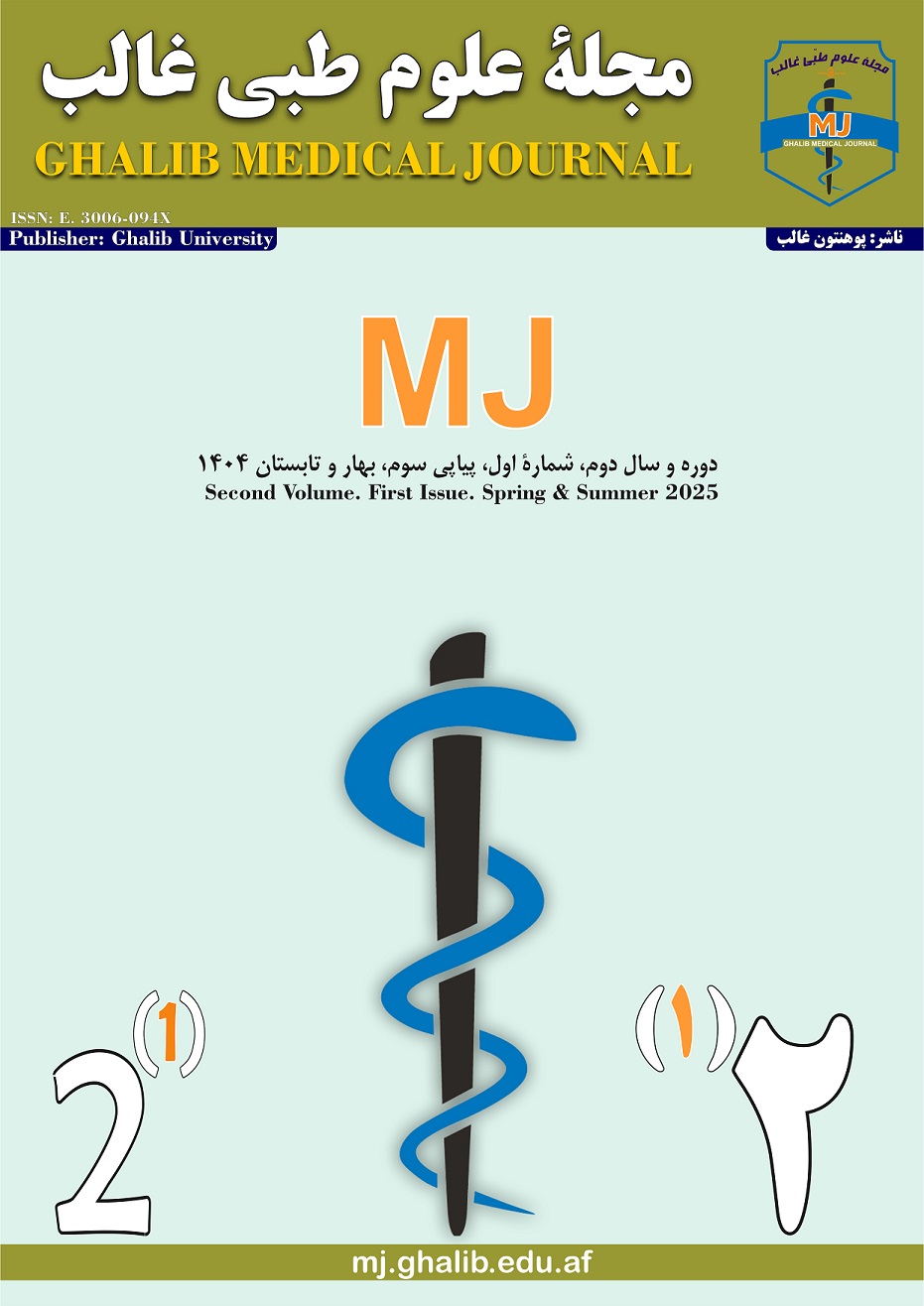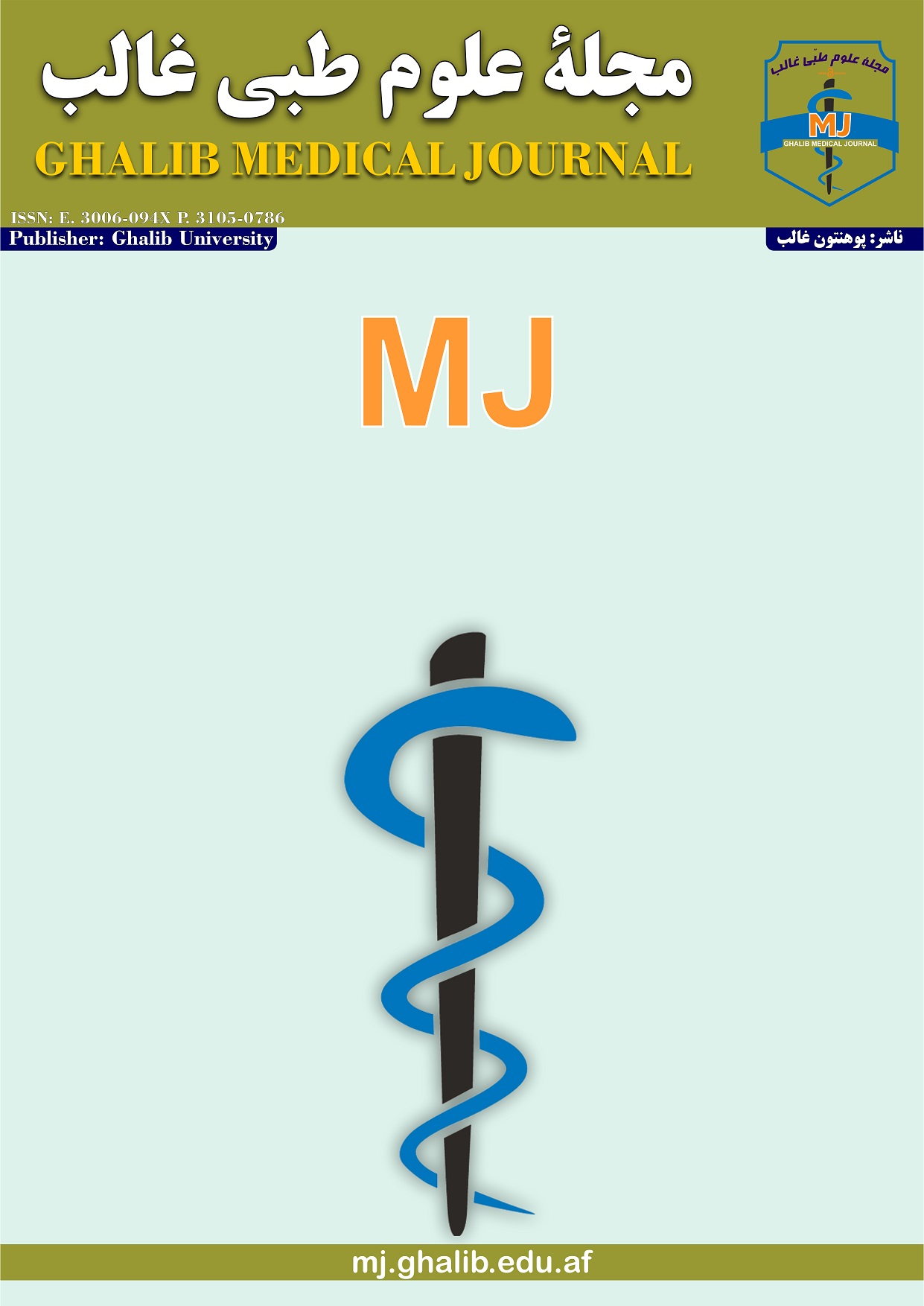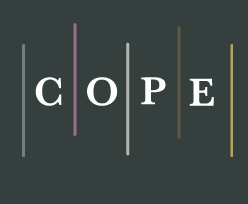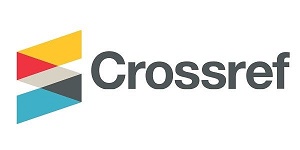Association of congenital Nasolacrimal duct obstruction and delivery-related variables: a cross-sectional study
DOI:
https://doi.org/10.58342/ghalibMj.V.2.I.1.1Keywords:
CNLDO, Mode of Delivery, CS, Vaginal Delivery, AfghanistanAbstract
Background: Congenital nasolacrimal duct obstruction affects 6–20% of infants, primarily due to incomplete canalization at the Hasner valve. While most cases resolve spontaneously, factors like delivery mode, family history, and maternal characteristics influence its prevalence. Vaginal deliveries may clear residual obstructions through mechanical compression, whereas cesarean sections have been linked to higher CNLDO risk.
Methods: This cross-sectional study included 107 pediatric patients with CNLDO at Roshana Eye Hospital in Herat. Data on demographics, delivery mode, birth frequency, family history, and affected eye were analyzed using descriptive and inferential statistics.
Results: Our finding showed a significant association between CNLDO and delivery-related variables. Vaginal births were predominant across all age groups, with infants older than 20 months showing the highest proportion (94.1%) compared to caesarean sections (5.9%) (P = 0.034). Male children were predominantly born to multiparous mothers (65.4%), while females were more associated with primiparous births (54.5%) (P = 0.038). A positive family history strongly correlated with caesarean births (65.4%) compared to vaginal deliveries (34.6%) (P < 0.001) and was more common in primiparous births (84.6%) than multiparous births (15.4%) (P < 0.001). No significant relationship was found between the affected eye and birth type or frequency.
Conclusion: The study underscores the role of CS and family history as significant risk factors for CNLDO, highlighting the interaction between genetic predispositions and delivery-related variables. These findings provide insight into regional patterns and underscore the importance of population-specific research and tailored healthcare strategies.
References
Young JD, MacEwen CJ. Fortnightly review: Managing congenital lacrimal obstruction in general practice. Bmj 1997;315:293–6.
Tan AD, Rubin PAD, Sutula FC, Remulla HD. Congenital Nasolacrimal Duct Obstruction: International Ophthalmology Clinics 2001;41:57–69. https://doi.org/10.1097/00004397-200110000-00008.
Sasaki T, Matsumura N, Miyazaki C, Kamao T, Yokoi N, Fujimoto M, et al. Congenital nasolacrimal duct obstruction: clinical guideline. Jpn J Ophthalmol 2024;68:367–88. https://doi.org/10.1007/s10384-024-01064-4.
MacEwen C, Young J. Epiphora during the first year of life. Eye 1991;5:596–600.
Palo M, Gupta S, Naik MN, Ali MJ. Congenital Nasolacrimal Duct Obstruction and Its Association With the Mode of Birth. J Pediatr Ophthalmol Strabismus 2018;55:266–8. https://doi.org/10.3928/01913913-20180213-03.
Kamal S, Javed Ali M, Gauba V, Qasem Q. Congenital Nasolacrimal Duct Obstruction. In: Javed Ali M, editor. Principles and Practice of Lacrimal Surgery, New Delhi: Springer India; 2015, p. 117–31. https://doi.org/10.1007/978-81-322-2020-6_12.
Bilge AD. Mode of delivery, birth weight and the incidence of congenital nasolacrimal duct obstruction. Int J Ophthalmol 2019;12. https://doi.org/10.18240/ijo.2019.07.13.
Tavakoli M, Osigian CJ, Saksiriwutto P, Reyes-Capo DP, Choi CJ, Vanner EA, et al. Association between congenital nasolacrimal duct obstruction and mode of delivery at birth. Journal of American Association for Pediatric Ophthalmology and Strabismus 2018;22:381–5. https://doi.org/10.1016/j.jaapos.2018.05.016.
Ulutaş HG, Gündüz GU. The effect of cesarean section on the incidence of congenital nasolacrimal duct obstruction. The European Research Journal 2021;7:291–6.
Spaniol K, Stupp T, Melcher C, Beheiri N, Eter N, Prokosch V. Association between Congenital Nasolacrimal Duct Obstruction and Delivery by Cesarean Section. Amer J Perinatol 2014;32:271–6. https://doi.org/10.1055/s-0034-1383847.
Eshraghi B, Babaei L, Moradi M, Chaibakhsh S, Aghajani A. Assessing the success rate of treatment in simple and complex congenital nasolacrimal duct obstruction: A systematic review and meta-analysis. Graefe’s Archive for Clinical and Experimental Ophthalmology 2024;262:1993–2004.
Alakus MF, Dag U, Balsak S, Erdem S, Oncul H, Akgol S, et al. Is there an association between congenital nasolacrimal duct obstruction and cesarean delivery? European Journal of Ophthalmology 2020;30:1228–31. https://doi.org/10.1177/1120672119889522.
Kuhli-Hattenbach C, Lüchtenberg M, Hofmann C, Kohnen T. Increased prevalence of congenital dacryostenosis following cesarean section. Der Ophthalmologe 2016;113:675–83.
Jones L, Wobig J. Congenital anomalies of the lacrimal system. Surgery of the Eyelids and Lacrimal System Birmingham, AL: Aesculapius 1976:157–73.
Barham HP, Wudel JM, Enzenauer RW, Chan KH. Congenital Nasolacrimal Duct Cyst/Dacryocystocele: An Argument for a Genetic Basis. Allergy�Rhinol (Providence) 2012;3:ar.2012.3.0024. https://doi.org/10.2500/ar.2012.3.0024.
Sathiamoorthi S, Frank RD, Mohney BG. Incidence and clinical characteristics of congenital nasolacrimal duct obstruction. Br J Ophthalmol 2019;103:527–9. https://doi.org/10.1136/bjophthalmol-2018-312074.
Mahjubfar F. Prevalence and factors affecting congenital nasolacrimal duct obstruction( CNLDO) in the neonates born in mobini hospital in Sabzevar,Iran (1394) 2016.
Zobal-Ratner JL, Bacal CDA, Braverman R, Capo H, Dagi L, Drack AV, et al. What’s New and Important in Pediatric Ophthalmology and Strabismus for 2014. Workshop, Friday, 2014.
Eshraghi B, Houshang-Jahromi M-H, Haghshenas Z, Pourazizi M. Relation between mode of delivery and related factors with congenital nasolacrimal duct obstruction. Saudi Journal of Ophthalmology 2024:10–4103.
Petersen RA, Robb R. The natural course of congenital obstruction of the nasolacrimal duct. Journal of Pediatric Ophthalmology and Strabismus 1978;15 4:246–50. https://doi.org/10.3928/0191-3913-19780701-14.
Noda S, Hayasaka S, Setogawa T. Congenital nasolacrimal duct obstruction in Japanese infants: its incidence and treatment with massage. Journal of Pediatric Ophthalmology and Strabismus 1991;28 1:20–2.
Published
How to Cite
Issue
Section
License
Copyright (c) 2025 سید عارف صالحی, سید فاروق حسینی, محمد مسعودی

This work is licensed under a Creative Commons Attribution 4.0 International License.










